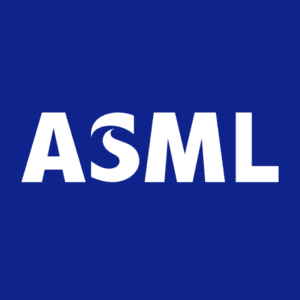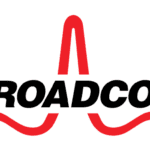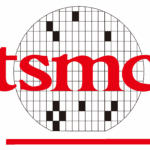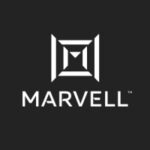ASML Holding N.V. (ASML) Stock Analysis

ASML Holding N.V. (NASDAQ: ASML) Stock Analysis
Analysis Date: March 6, 2025
1. Company Overview
ASML Holding N.V. is a leading supplier of photolithography systems used in the fabrication of integrated circuits. The company designs, manufactures, and services semiconductor equipment, primarily for advanced chipmaking processes.
- Core Business: Semiconductor lithography systems (EUV, DUV) and related services.
- Customer Base: Major chip manufacturers such as TSMC, Samsung, Intel.
- Industry Position: ASML is considered critical for leading-edge semiconductor production, with strong technology leadership in extreme ultraviolet (EUV) lithography.
2. Financial Performance
a. Revenue & Growth
- TTM Revenue: $29.26 billion
- Revenue Growth (YoY): +2.56%
Analysis:
ASML’s growth is cyclical with semiconductor demand. Recent revenue deceleration (+2.56%) is partly due to cyclical slowdowns and macroeconomic conditions. Longer-term growth is expected to remain robust, driven by advanced lithography adoption.
b. Profitability
- TTM Net Income: $7.84 billion
- EPS (TTM): $19.92
- Profit Margin: 26.79%
Analysis:
ASML’s profit margin is high for capital equipment providers, reflecting strong pricing power in a near-monopoly position for EUV systems. Net income remains solid, though cyclical headwinds can affect future orders.
c. Margins
- Gross Margin: 51.28%
- Operating Margin: 31.92%
- EBITDA Margin: ~35%
Analysis:
ASML’s margins are robust, underpinned by specialized technology and limited competition. Operating margin near 32% highlights operational efficiency and premium product pricing.
d. Free Cash Flow
- Operating Cash Flow (TTM): $11.56 billion
- Capital Expenditures (TTM): -$2.14 billion
- Free Cash Flow (TTM): $9.83 billion
Analysis:
ASML generates substantial free cash flow (FCF margin ~33.58%). This supports R&D investments, dividend payouts, and share buybacks. The strong FCF is a key attraction for investors, indicative of the firm’s pricing power and stable demand.
3. Balance Sheet & Liquidity
- Cash & Equivalents: $13.20 billion
- Total Debt: $5.24 billion
- Net Cash Position: $7.96 billion or $20.23 per share
- Equity (Book Value): $19.13 billion
- Debt / Equity Ratio: 0.27
Analysis:
ASML maintains a healthy balance sheet, with significant net cash. This provides financial flexibility for R&D, expansions, or share repurchases.
4. Valuation
- PE Ratio (TTM): 37.14
- Forward PE: 28.78
- PS Ratio: 9.76
- EV/EBITDA: 27.15
- EV/FCF: 28.20
Analysis:
ASML trades at a premium, reflecting its critical role in semiconductor manufacturing. While a forward PE of ~29 is high relative to broader markets, it’s often justified by ASML’s strong competitive moat, high margins, and growth prospects in advanced lithography.
5. Market Performance
- 52-Week Price Change: -25.88%
- Beta: 1.11
Analysis:
ASML has seen a notable decline over the last year (-25.88%), partly due to cyclical concerns in semiconductors and broader market volatility. However, the beta near 1.11 suggests slightly higher volatility than the market average.
6. Risks & Considerations
1. Cyclical Semiconductor Demand: Revenue can fluctuate with global chip demand cycles.
2. Geopolitical Tensions: Export restrictions (e.g., to China) can affect ASML’s sales of advanced lithography tools.
3. High R&D Requirements: Continuous innovation is necessary to maintain technology leadership.
4. Concentration Risk: A few major customers (TSMC, Samsung, Intel) account for a large portion of sales.
5. Supply Chain & Operational Execution: Complex manufacturing processes could face disruptions or delays.
7. Conclusion
Pros:
- Market Leadership: Near-monopoly in EUV lithography, critical to advanced chip manufacturing.
- Strong Margins & Cash Flow: Operating margin >30%, robust free cash flow.
- Healthy Balance Sheet: Net cash position offers financial flexibility.
- Long-Term Secular Tailwinds: Demand for advanced semiconductors likely to grow with AI, 5G, HPC, etc.
Cons:
- Cyclical Exposure: Revenue subject to chip industry cycles.
- High Valuation Multiples: Premium priced for its monopoly-like position.
- Geopolitical Export Risks: Potential restrictions on selling advanced tools to certain regions.
Final Note:
ASML remains a cornerstone in the semiconductor equipment industry, enjoying strong pricing power and growth prospects. While cyclical headwinds may cause short-term volatility, the long-term outlook for advanced lithography demand remains positive. Investors must balance the premium valuation with the company’s dominant market position and robust free cash flow generation.
Disclaimer:
This analysis is for informational purposes only and does not constitute financial advice. All investments carry risk, including the potential loss of principal. Always conduct your own research or consult a licensed professional before making investment decisions.






